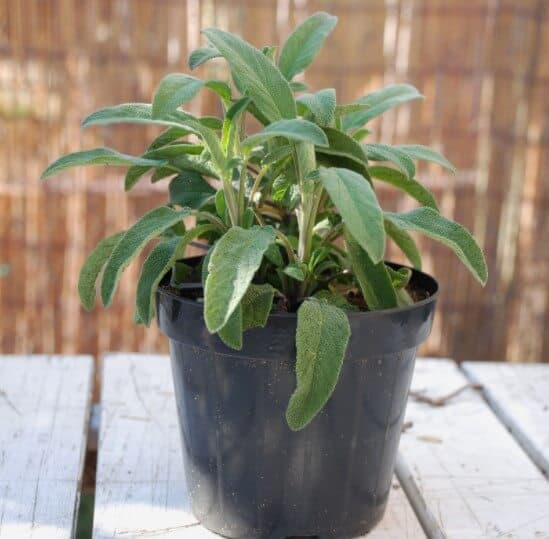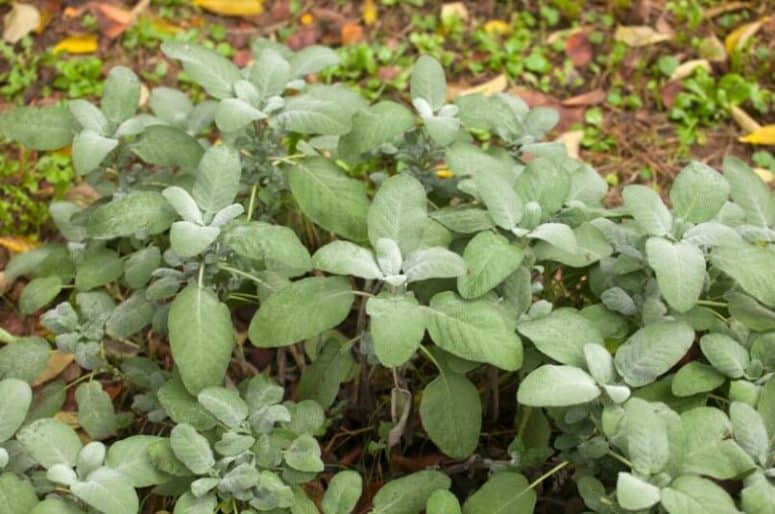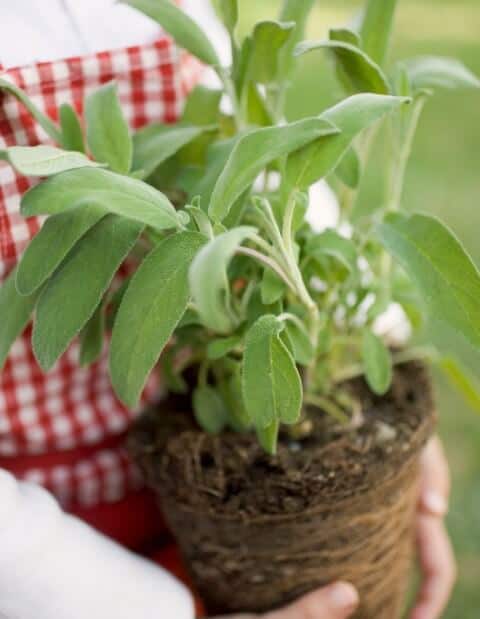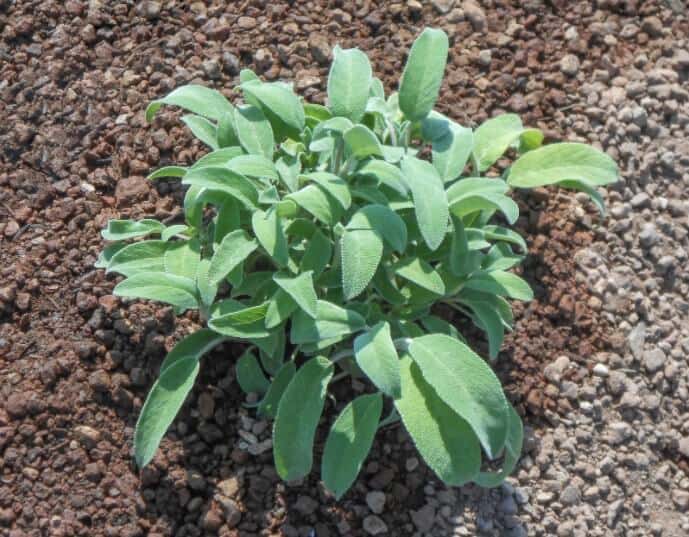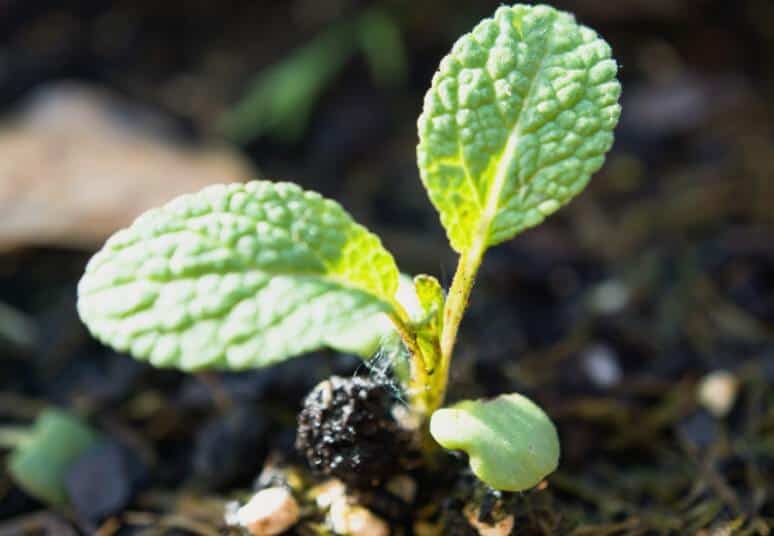How to Grow Sage At Home (A Beginner Guide)
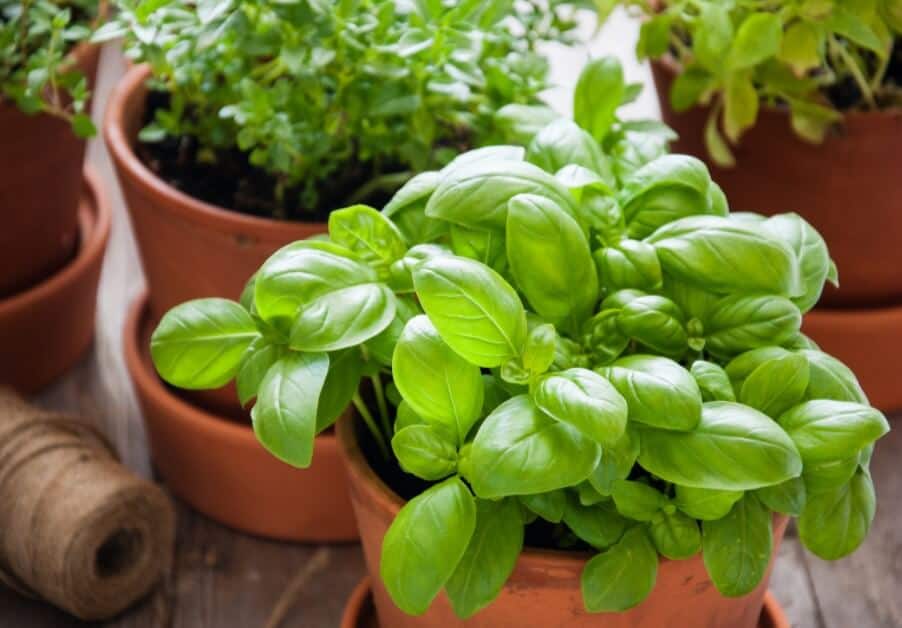
There are some smells from herbs that bring the vibes of a season. Sage, on the other hand, offers you a pleasant thanksgiving smell.
Sage belongs to the mint family, and it is one of the most straightforward and most flexible herbs to grow at home, either indoor or outdoor. In terms of appearance, sage tend to grow wider rather than taller.
People use sage in their daily life as herbs to add flavor to the dish. The taste of the sage matches poultry products and pork really well. Many people like to use sage as the herbs mixed with other ingredients as stuffing in thanksgiving meat in the fall.
The aromatic and savory sensation from sage also tastes very good in lamb, risotto, or winter squash dishes. Pairing it with rosemary or basil is also not a bad idea.
Besides, the sage also contains some benefits for our body. Sage is believed to improve human memory skills and resolve stomach ailments too.
Therefore, many women like to consume sage to ease menopause symptoms. Sage is also rich in antioxidants that are very good for body immunity.
Now let’s start learning to plant sage in our house, shall we? You don’t have to worry about being a green thumb beginner.
Planting sage does not require so many steps. In fact, sage is one of the easiest herbs to grow. Here is the ultimate guide on how to grow sage at home.
How to Grow Sage
There are some different sage types, but there are just three most common ways to grow it. You can either plant sage from seed, cuttings, or layering.
Growing it from seed means you plant the seed and treat the seeds until it grows to be a bush of sage that you can harvest.
If you choose to grow it from seed, notice that the seed takes a couple of years to be mature.
The seed route even needs six to eight weeks of planting before the last frost, and not mention the three weeks germination time before you can transplant the seedlings to the soil.
Meanwhile, growing it from cutting and layering means producing the stem from the previously grown sage plants.
If you want to have a more comfortable and faster way, you’d better grow sage from cutting. It is possible to grow sage from seed, but it might be hard to establish, especially for beginners.
Indoor or Outdoor?
Sage is a flexible herb to plant. It can hold to heat and cold. Not it’s all up to you whether you want to grow it indoors or you have enough garden to plant your sage outdoor.
Either indoor or outdoor, planting sage needs enough moisture for the soil. Therefore, drainage is essential to make this perennial herb live for years.
Speaking of drainage, the pot or container that you use to plant sage indoor should be able to make the soil well-drained.
Yes, sage likes moist soil, but it’s always wrong to overwater herb plants. Place the container in your window with enough exposure to sunlight. Sage likes medium to full sunlight. Therefore it’s enough to give your sage sunlight through the window.
As for the outdoors, you have to understand that sage could grow wide with only up to 24 inches tall. Therefore plant it apart from the other plants in your garden.
Besides, the soil quality that sage requires is different from most herbs that love drought soil.
Soil
Most herbs like dry and almost-drought environments for their soil. As for sage, this one loves moist soil but still sandy, loamy, and well-drained.
For optimal growth, you want the soil to have s pH between 6 and 7. Also, if you are growing sage for culinary purposes, do not over-fertilize it.
Otherwise, you’re going to lose the intense and delicate flavor sage could contribute to your dish.
Light
Like other herbs, more sun means better growth, and sage applies the same rule in more flexible conditions.
Yes, sage loves full sun and direct light, but it still could grow very well in enough sun, like when you plant it indoors, for instance.
However, make sure to get your sage enough sunlight every single day for healthier growth and better quality. Enough sunlight could dry the dampness of the leaves after one night and prevent them from rotting.
Water
Sage is tolerant towards drought and cold. Just make sure to always keep the soil moist in summer and well-drained in winter.
Never overwater sage. Water the sage once the top inch of the soil gets totally dried. That is how you water sage. Do it thoroughly.
Overwater the sage, and you’ll see mildew growing and other pests start to taste your sage.
Temperature
Sage could take any temperature, as long as it does not sit in wet and damp soil. Sage prefers a warm and sunny spot, but it does not enjoy extreme heat.
The environment that sage likes to live in is where the heat and the cold do not extremely expose the plant. Moist and well-drained soil is the best condition that sage could have.
Fertilizer
Sage does not require regular feeding or fertilizing. However, the best quality of sage could grow if you mix the loamy and moist soil with a side dressing of compost tea before you plant it. Also, you can give it again twice during the growing period.
Harvest and Propagation
Once your sage has grown bushy, you can harvest it as you need. Harvest the sage in the morning when the dew has evaporated.
Harvest the leaves lightly in the first year of growth to ensure full ripening. You can do a larger harvest during the growing period afterward.
The propagated sage can be used fresh or dried. Fresh sage can give you fragrant and intense flavor.
However, it depends on the recipe because dried sage could concentrate very well in some dishes.
Troubleshooting the Pest
Growing sage is easy, but you still have to be aware of the pest or disease that might happen to your sage plant.
The disease usually is not a big issue for sage. It’s just a matter of whether or not you have good drainage in our soil during the process of growing sage. Good drainage could prevent root rot and mildew.
When both happen, the cause is more likely to be your humidity from the soil or environment. Therefore, always control the air circulation around sage plants and make sure the soil is always well-drained.
As for pests and insects, spider mites, thrips, and spittlebugs might be interested in sage. Using organic insecticides such as pyrethrum or insecticidal soap or oil could help you keep those pests under control.
Conclusion
Sage is very easy to grow. Growing it from seed might be an issue, regarding the matter of time. However, there are still other ways like cutting and layering to grow it in your house.
Either indoor or outdoor, planting sage requires moist, loamy, sandy, and well-drained soil. Water the soil once the top inches of the soil get totally dried. Do that thoroughly; otherwise, the soil could get overwatered.
An overwater soil is the cause of mildew and root rot in the sage.
